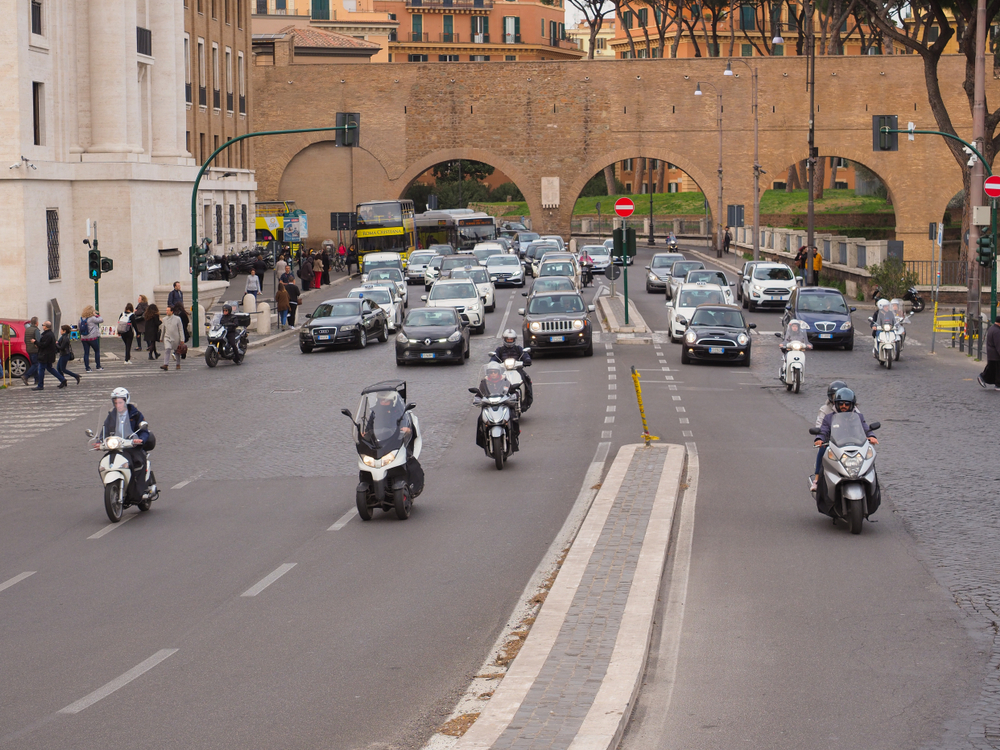Driving and Autos: Auto
Italy has one of the highest rates of car accident deaths in the European Union. Streets in Italian historic city centers are often narrow, winding, and congested. Motor scooters are very popular, and scooter drivers often see themselves as exempt from conventions that apply to automobiles. Pedestrians and drivers should be constantly alert to the possibility of scooters’ sudden presence. Most vehicle-related deaths and injuries involve pedestrians or cyclists who are involved in collisions with scooters or other vehicles. Be particularly cautious if you rent a scooter. You should remain vigilant and alert when walking or cycling near traffic. Pedestrians should be careful, as sidewalks can be extremely congested and uneven. Drivers of bicycles, motorcycles, and other vehicles routinely ignore traffic signals and traffic flows, and park and drive on sidewalks. For safety, pedestrians should look carefully in both directions before crossing streets, even when using a marked crosswalk with a green avanti ("walk") light illuminated. Traffic lights are limited and often disobeyed, and a different convention of right-of-way is observed.
Italy has over 5,600 kilometers (3,480 mi.) of Autostrada, or superhighways. Commercial and individual vehicles travel and pass on these well-maintained roads at very high speeds. In rural areas, a wide range of speed on highways makes for hazardous driving. Roads are generally narrow and often have no guardrails. Travelers in northern Italy, especially in winter, should be aware of fog and poor visibility, responsible for multiple-car accidents each year. Most Italian automobiles are equipped with special fog lights. Roadside assistance in Italy is excellent on the well-maintained toll roads, but limited on secondary roads. Use of safety belts and child restraining devices is mandatory and headlights should be on at all times outside of urban areas.
Foreign citizens driving in Italy should also note that, according to Italian regulation, if a resident of a non-European Union country violates a traffic law, the violator must pay the fine at the time the violation occurs to the police officer issuing the ticket. If the citizen does not or cannot pay the fine at the time, Italian regulation allows the police officer to confiscate the offender’s vehicle (even if the vehicle is a rental vehicle).
Car rental is available in most of Italy's cities. It can prove very expensive through the major car rental firms. Generally, small local firms will rent cars at a better rate, but only locally. There are numerous discount-rate fly/drive and rail/drive deals available in Italy, some of which must be arranged in advance while the traveler is still outside the country. A credit card and valid driver's license is required for rental, as is insurance.
Driving in rural areas remains fairly civilized, but urban driving—especially in Rome—can be terrifying. It is not recommended for any but the most experienced visitors. (Visitors may also rent motorbikes, but with the same provisos as rental cars.)
Source: US Department of State
Copyright © 1993—2025 World Trade Press. All rights reserved.

 Italy
Italy 